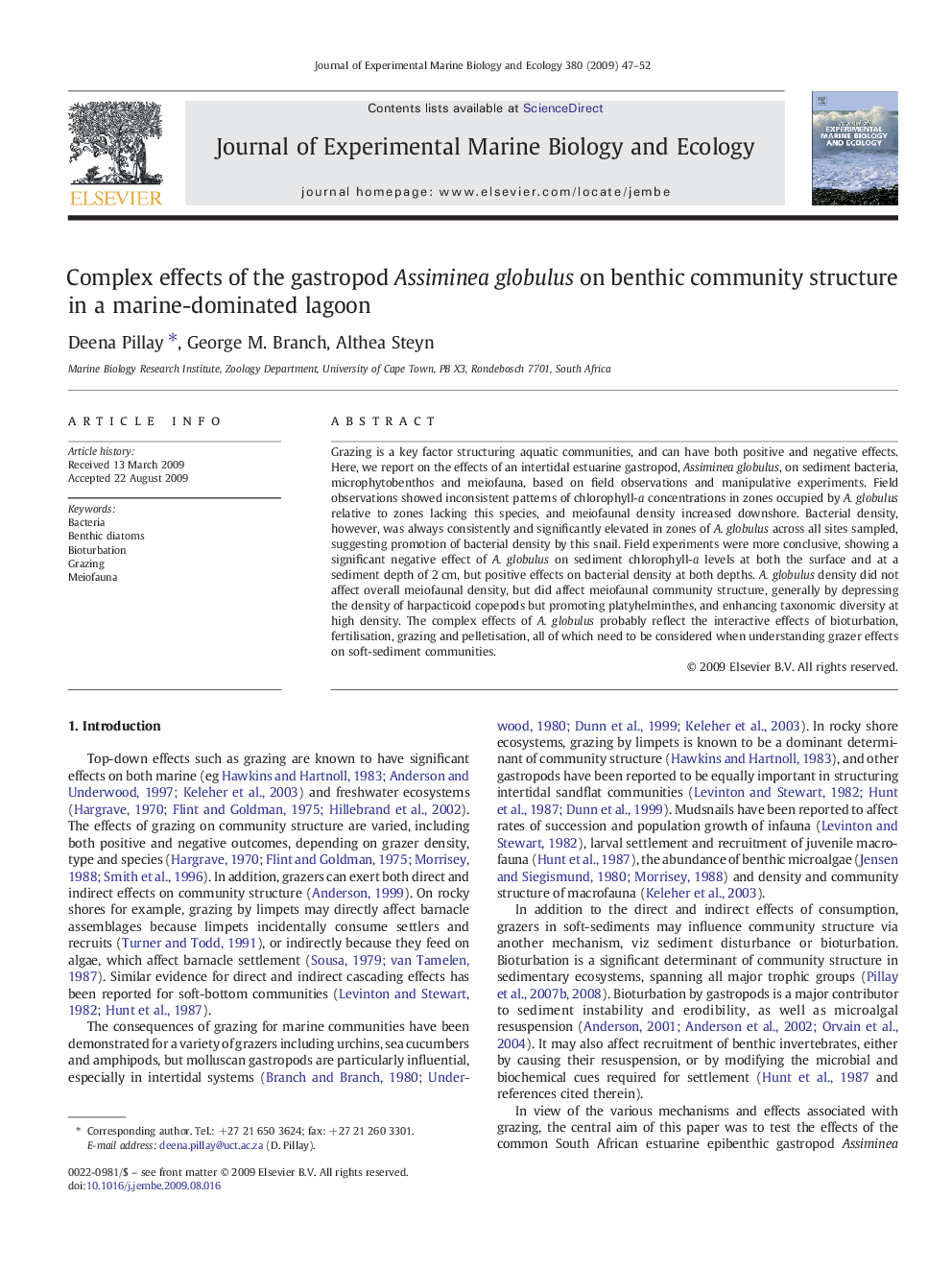| Article ID | Journal | Published Year | Pages | File Type |
|---|---|---|---|---|
| 4396746 | Journal of Experimental Marine Biology and Ecology | 2009 | 6 Pages |
Grazing is a key factor structuring aquatic communities, and can have both positive and negative effects. Here, we report on the effects of an intertidal estuarine gastropod, Assiminea globulus, on sediment bacteria, microphytobenthos and meiofauna, based on field observations and manipulative experiments. Field observations showed inconsistent patterns of chlorophyll-a concentrations in zones occupied by A. globulus relative to zones lacking this species, and meiofaunal density increased downshore. Bacterial density, however, was always consistently and significantly elevated in zones of A. globulus across all sites sampled, suggesting promotion of bacterial density by this snail. Field experiments were more conclusive, showing a significant negative effect of A. globulus on sediment chlorophyll-a levels at both the surface and at a sediment depth of 2 cm, but positive effects on bacterial density at both depths. A. globulus density did not affect overall meiofaunal density, but did affect meiofaunal community structure, generally by depressing the density of harpacticoid copepods but promoting platyhelminthes, and enhancing taxonomic diversity at high density. The complex effects of A. globulus probably reflect the interactive effects of bioturbation, fertilisation, grazing and pelletisation, all of which need to be considered when understanding grazer effects on soft-sediment communities.
